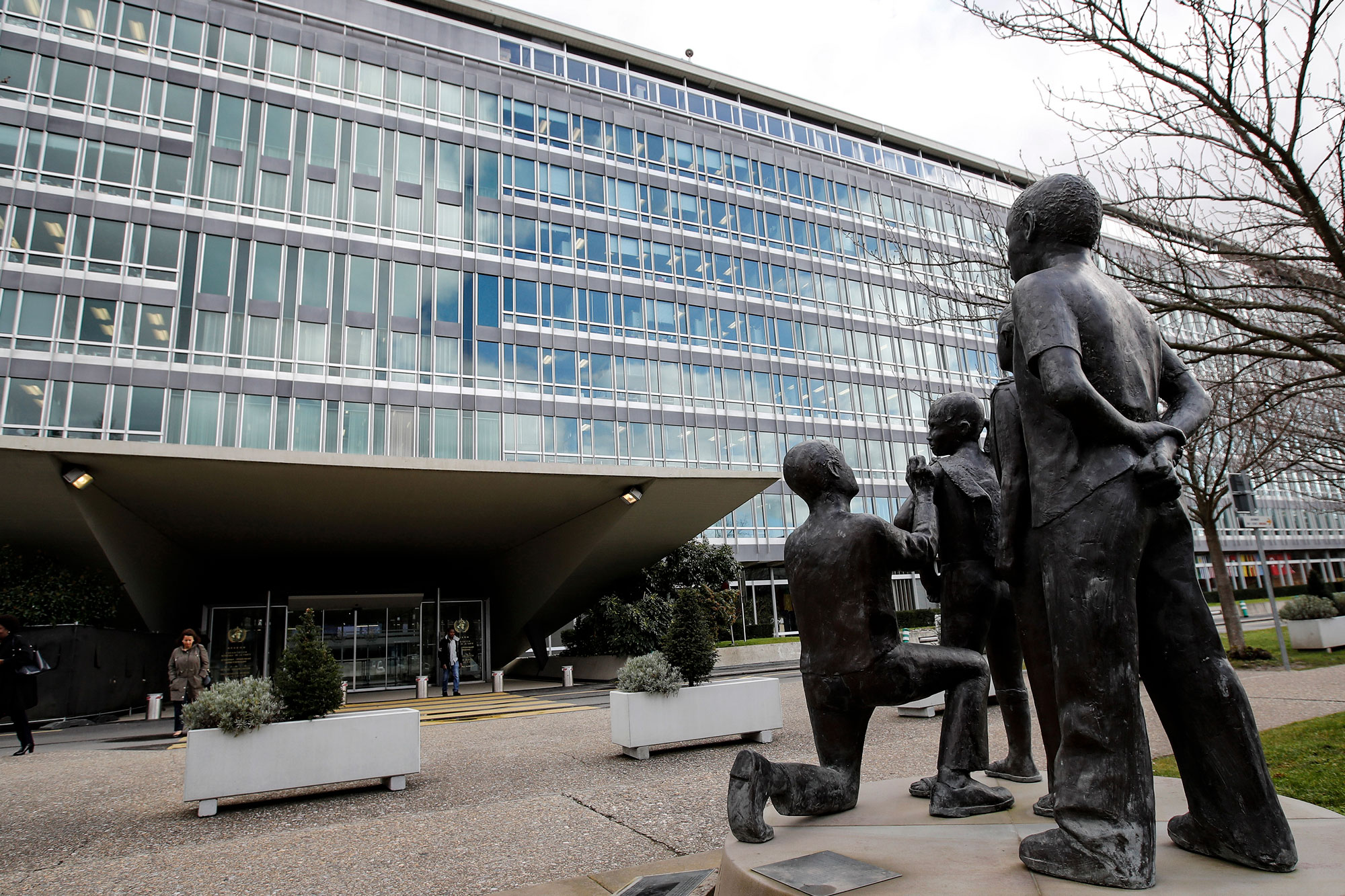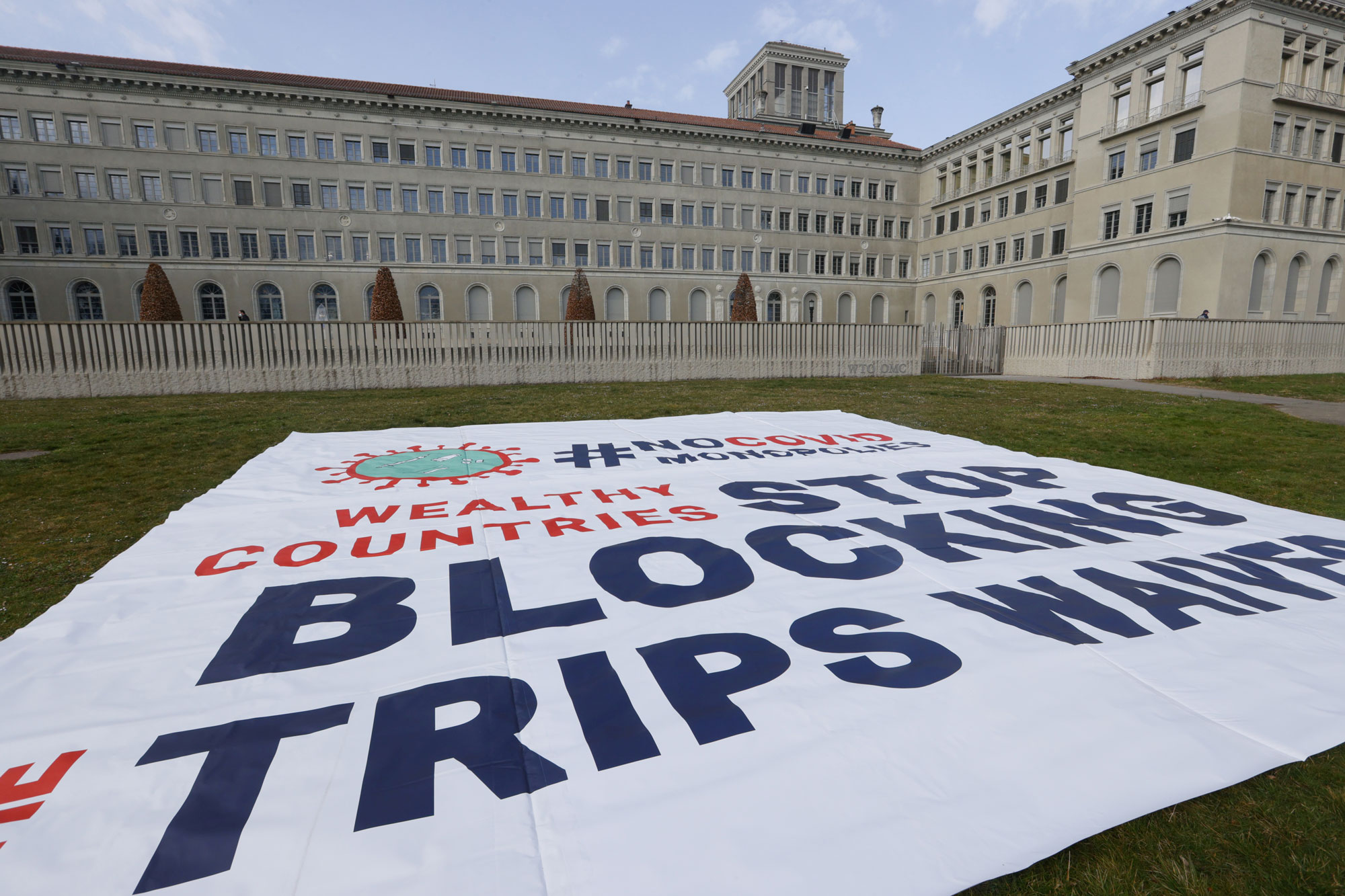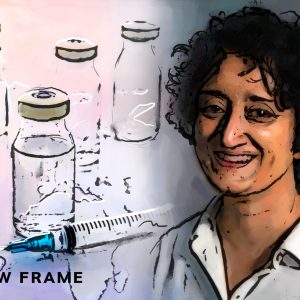The politics and promise of a pandemic treaty
Covid-19 has shown just how ill-prepared the world was to fight pandemics as a unified unit. A proposed pandemic treaty, whose intentions some experts question, aims to change that.
Author:
16 April 2021

On 30 March, 25 heads of state including South Africa’s President Cyril Ramaphosa called for the creation of an international pandemic treaty through the World Health Organization (WHO) to strengthen global capacity to predict and respond to pandemic threats. The call was published as a commentary in newspapers across the world.
Those endorsing the commentary include leaders of both developed and developing countries – such as Germany, the United Kingdom, South Korea, South Africa and Senegal. The commentary was also signed by WHO director-general Tedros Adhanom Ghebreyesus and the EU president Charles Michel.
Ellen ’t Hoen, an expert on medicines policy and law, told Spotlight that while multiple country leaders are now calling for a treaty, it was initially proposed by Michel during the November 2020 Paris Peace Summit. WHO’s Tedros told reporters on 30 March that the EU president “has championed the call for an international treaty to make the world better prepared to respond to pandemics and health crises”.
What will be in the pandemic treaty?
At this point little is known about what the pandemic treaty will entail, as it is still only an idea and its contents have yet to be proposed or negotiated. In their commentary on the need for a treaty, global leaders outlined their broad aspirations for the treaty, including fostering “mutual accountability”, “shared responsibility, transparency and cooperation” and “ensuring equitable and universal access” to health technologies.
Tedros noted during the WHO’s 30 March press conference that while the contents of the treaty must still be negotiated by WHO member states, the WHO hopes the treaty will contain measures to enhance the “sharing of information”, the “sharing of pathogens” and the “sharing of technologies” between countries.

The proposed treaty will seemingly seek to prevent the types of secrecy and go-it-alone approaches that have hampered monitoring and containment of Covid-19 from recurring in future pandemic responses. The treaty will also seek to build national, regional and global capacity for monitoring and sharing of data on future pandemic threats.
The commentary also signals that the treaty will aim to prevent the vast access inequities we have seen with Covid-19. It states: “The Covid-19 pandemic has been a stark and painful reminder that nobody is safe until everyone is safe. We are, therefore, committed to ensuring universal and equitable access to safe, efficacious and affordable vaccines, medicines and diagnostics for this and future pandemics.”
To date, over 90% of vaccines have been administered in just 10 countries, while only 2% of vaccines have been administered in Africa. Doctors and nurses across Africa remain unprotected, while some wealthy countries are already vaccinating low-risk populations.
But can a treaty really make countries work together?
Some observers have pointed out that there are already international treaties obliging countries to work collaboratively in responding to pandemic threats and ensure access to health technologies in the developing world.
Clare Wenham, a global-health policy professor from the London School of Economics, questioned in The Guardian why in their responses to Covid-19 “did governments not abide by international law and norms for pandemic management that were already in place?” Wenham explains that the International Health Regulations (IHR) already contain legal requirements for countries to share information about emerging pathogens and implement public health responses. The IHR is an international treaty first adopted by the World Health Assembly (a body made up of WHO member states) in 1969 and revised in 2005.
Mike Ryan, head of emergencies at WHO, told reporters on 30 March that the IHR is “without meaning unless countries are fully committed to its implementation”. The proposed pandemic treaty would however deliver a “higher level of political commitment to the principles in the IHR”, according to Ryan.
Related article:
Clearly, the proposed treaty would need stronger enforcement mechanisms than those contained in the IHR to work. But Wenham questions whether countries will ever agree to a treaty that reduces their sovereignty in responding to health crises such as Covid-19.
Leslie London, a professor of public health at the University of Cape Town, notes that “most countries in the world are parties to the International Covenant on Economic, Social and Cultural Rights (ICESCR), which includes the Right to Enjoy the Benefits of Scientific Progress”. The ICESCR is an international treaty adopted by the United Nations General Assembly in 1966.
London explains that the Right to Enjoy the Benefits of Scientific Progress places obligations on countries to apply and regulate research results in a way that enables affordable access in developing countries.

Why propose such a treaty now?
Some have also questioned the timing of the proposed treaty. “Leaders from two dozen countries have called for a global treaty to address future pandemics, instead of tackling the current worsening Covid-19 pandemic that has claimed more than 2.7 million lives,” states Third World Network (TWN), an international health and development non-governmental organisation.
Yousuf Vawda, a law professor at the University of KwaZulu-Natal (UKZN), questions whether EU countries championing the proposed treaty actually intend to see it through, or if its proposal is simply a political tactic to divert attention away from their current Covid-19 responses.
Related article:
“It would not be excessive to say that some proponents of the new initiative want it to serve as a smokescreen to divert attention from the shameful response to the Covid-19 pandemic by rich countries,” says Vawda. “Perhaps they hope that once the current crisis has passed, this initiative will disappear into the ether as did previous attempts to create a binding treaty on R&D (research and development),” says Vawda.
“It is worth reflecting on how rare binding treaties are in the health sphere, and how difficult it would be to get countries to ratify a treaty that reduces national sovereignty,” notes UKZN pharmacologist Andy Gray. “Trying to negotiate a pandemic treaty that is separate from the IHR looks very ambitious.”

Is the treaty proposal a ploy to distract attention from the TRIPS waiver proposal?
Sceptical observers may view the proposal for an international pandemic treaty as a ploy by the EU to propagandise its efforts in supporting global responses to Covid-19 – while pursuing a me-first pandemic response and blocking efforts led by developing countries to overcome impediments to expanding Covid-19 vaccine manufacturing in international trade law.
South Africa, together with India, formally requested in October 2020 that the World Trade Organisation (WTO) grant a waiver to allow countries to not enforce or grant 20-year patent monopolies required under international trade law on Covid-19 health technologies throughout the pandemic, or until global herd immunity is achieved.

While this proposal has garnered support from over 100 countries, it remains vigorously opposed by a group of wealthy countries, including several signatories of the call for the global pandemic treaty: the EU, the United Kingdom, Norway and South Korea.
“I think the timing [of the pandemic treaty call] is problematic. It appears that the agenda of the main movers (with the others going along wittingly or unwittingly) is to muddy the waters around the WTO waiver proposal to suspend IP during Covid. Of course, once the current pandemic is under control, this initiative will be kicked further down the road,” says Vawda.
But can an international treaty not do good, nevertheless?
While some observers point out reasons to view the proposed pandemic treaty with caution, they also stress that the idea of a treaty is not new. In fact, over the last decade, much effort from activists and some governments have gone into a proposed R&D treaty aimed at advancing and financing critical health research and ensuring equitable access to the health technologies developed from this research.
The impetus for such an R&D treaty is the recognition that the dominant global mechanism in place to drive the development and commercialisation of new health technologies – namely monopoly patent protections – is failing to incentivise innovation to address many of the most critical health challenges facing the globe.

A key shortcoming of the patent-based innovation model is that it incentivises industry to direct its R&D investments towards maximising industry profits and shareholder value, rather than maximising health benefits. This has resulted in a whole new class of diseases – known as “neglected diseases” that are prevalent in the developing world but garner little research investment from industry. This has also resulted in the neglect of urgently needed research to address pending health crises facing both developing and developed countries, such as antimicrobial resistance, that are not viewed as attractive investment prospects by profit-driven pharmaceutical companies. As a result, the advancement of research in many critical health areas is almost entirely dependent on public investment.
The creation of an R&D treaty has therefore been proposed as an alternative mechanism for financing the development of new health technologies neglected under the patent system. As Vawda recalls: “A proposal for an R&D treaty was raised at the World Health Assembly by some developing and least developed countries around 2009 following a recommendation of the WHO Global Strategy and Plan of Action on Public Health, Innovation and Intellectual Property.”
Recommendations for the creation of a legally binding R&D treaty were made again in 2012 by the WHO Consultative Expert Working Group on Research and Development and once more in 2019 by the United Nations High-Level Panel on Access to Medicines.

Substantial work has already been undertaken on what an R&D treaty should include in order to maximise global health impact. In its 2012 report, the WHO Consultant Expert Working Group proposed that the creation of a global fund for R&D under an international R&D treaty include mandatory requirements for countries to contribute 0.01% of their GDP to the fund and that all resulting technologies developed from the fund are public goods. In other words, private companies would not be granted commercial monopolies on the results of publicly funded research financed through the proposed fund.
While the research, development, and manufacturing scale-up of Covid-19 vaccines have largely been driven by public financing, the public funders (namely the EU and the US) have allowed private companies to hold commercial monopolies on vaccines developed using taxpayer money.
Related article:
’t Hoen explains to Spotlight that efforts to start negotiations towards the creation of an R&D treaty have been unsuccessful to date, because “it would have questioned the current status quo of financing R&D through high pricing, sustained by patents and other market exclusivities – something the pharmaceutical industry is very keen to avoid”.
“I found it telling that despite the fact that no one so far has mentioned intellectual property in the context of the [proposed pandemic] treaty, the IFPMA (International Federation of Pharmaceutical Manufacturers and Associations) was quick in putting out a statement along the lines of ‘don’t touch our patents’,” says ’t Hoen.
Advancing a new innovation model for health
The proposed pandemic treaty will be discussed at the next meeting of the World Health Assembly that will be held in May. While there may be reasons to question the EU’s intent in proposing the treaty, countries will shape the treaty during negotiations – if they do in fact move forward. This may provide an opening to once again push for a new approach to financing health innovation beyond the existing patent-driven approach.
Related article:
“I think treaty negotiations can offer a path to build international institutions like a pooled R&D fund, priority-setting processes and robust access arrangements that were envisioned as part of an R&D treaty, but that today remain the exception rather than the rule,” Suerie Moon, co-director of the Global Health Centre in Geneva, told Spotlight.
“Nothing has been decided, and nothing is set in stone regarding any such treaty. There is a lot of room to put forward proposals, to shape and follow any negotiations that may be launched and ultimately to demand accountability that any new treaty delivers for everyone. It will be a long political process, but I hope a productive and worthwhile one,” says Moon.
This article was first published in Spotlight.




